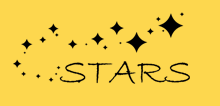Mentor
Dr. Kevin Yee
Abstract
When Disney's film Beauty and the Beast was first released in 1991, it was hailed by critics as a departure from the problematic portrayals of women that had plagued the company's previous efforts at converting fairy tales into animated features. Since then, feminist criticism has provided several different interpretations of the film, some of which seek to assign Beauty and the Beast to a specific literary genre. In looking at Disney's film as a literary text, critics such as June Cummins have argued that it most closely resembles a patriarchal classic romance, while others, such as Susan Swan, view it as a liberating Gothic novel. However, although the film borrows from the tropes and conventions of both of these genres, it most closely resembles a narrative of male reform through its plot, message, and visual signifiers. A reform narrative, such as Samuel Richardson's novel Pamela, features a male figure who is transformed through the presence of a virtuous female. Along with the similarity in plot, Beauty and the Beast adopts the reform narrative's exclusive focus on male change, its propagation of female innocence, and its idealization of domestic space and domestic virtue.
Recommended Citation
Dickens, Faith
(2011)
""The Guy with the Problem": Reform Narrative in Disney's Beauty and the Beast,"
The Pegasus Review: UCF Undergraduate Research Journal: Vol. 5:
Iss.
2, Article 3.
Available at:
https://stars.library.ucf.edu/urj/vol5/iss2/3

